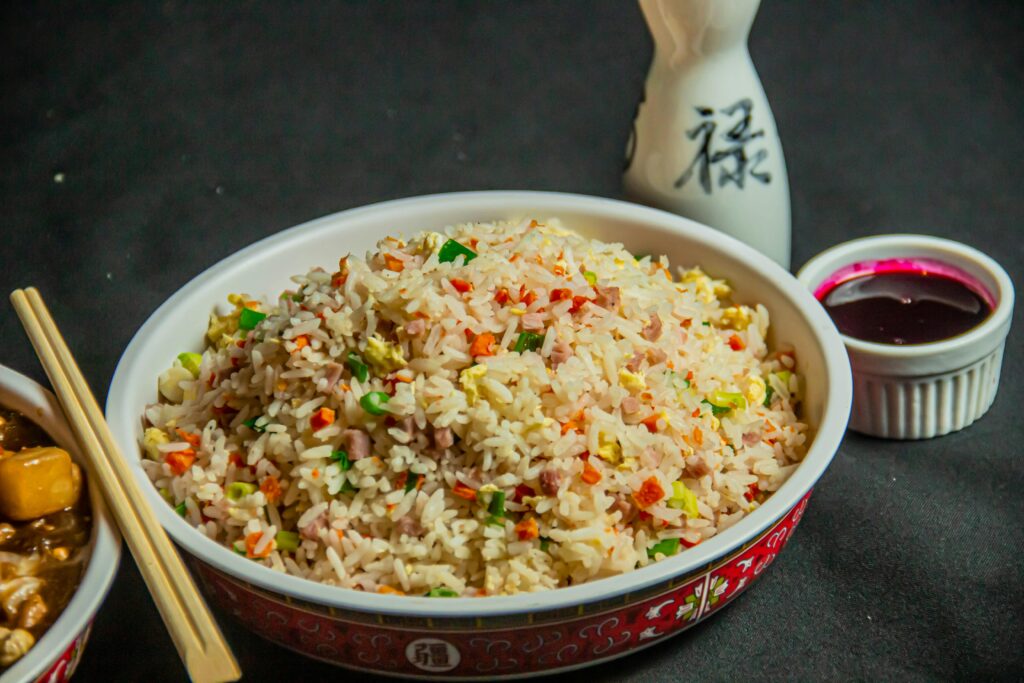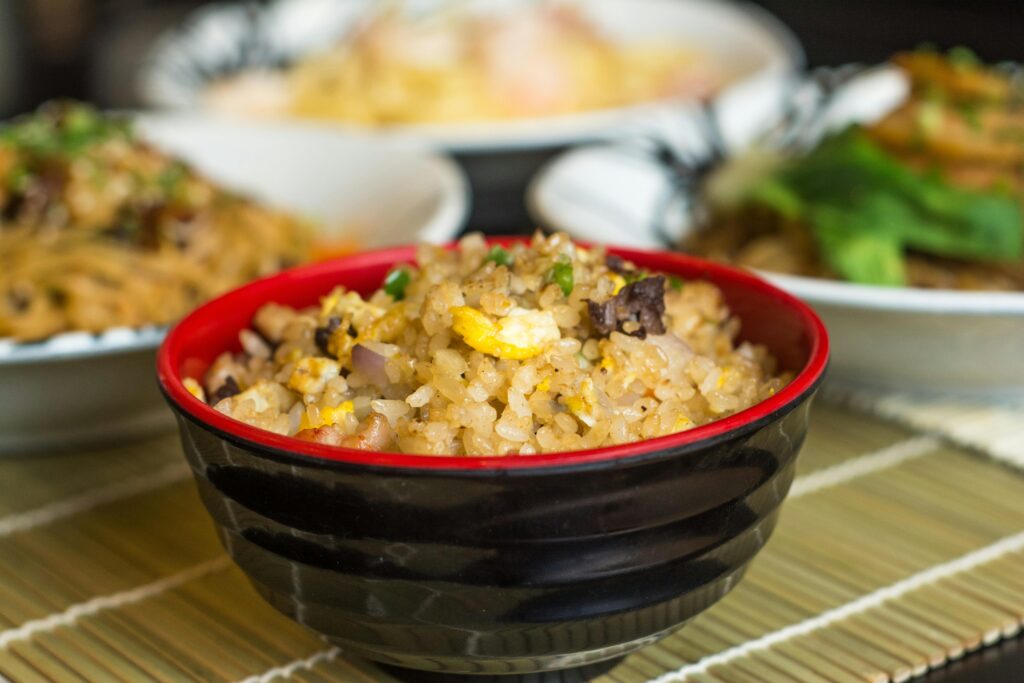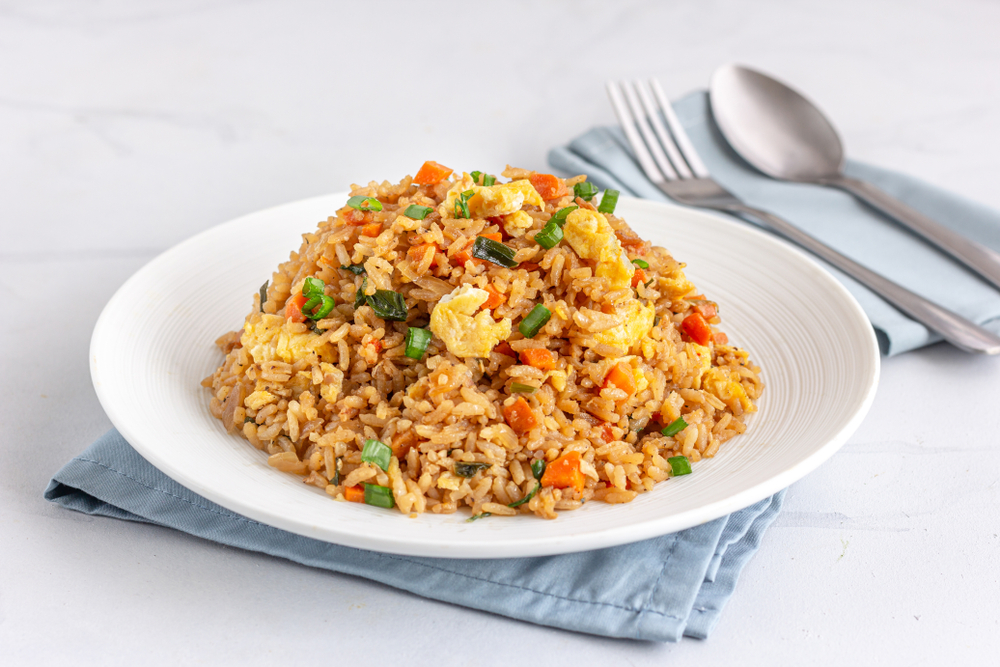Fried rice may seem like a safe, tasty pick at your favorite Chinese restaurant, but it often comes with hidden downsides that most diners do not consider. While it appears simple and filling, this dish is far from harmless. Whether you are thinking about health, hygiene, or flavor, there are better options available on the menu. This guide explains why ordering fried rice might not be the best idea, especially if you care about what goes into your food.
It’s Made with Old Ingredients and Leftover Rice

Restaurants rarely make fresh rice for fried rice orders. The reason is simple. Day-old rice produces the firm texture needed to avoid a mushy result in the wok. While this is a traditional technique, the catch is that many places use rice that has been sitting in storage for several days. If it is not properly cooled or stored, the rice can grow bacteria like Bacillus cereus, which survives reheating and can cause food poisoning. The other ingredients in fried rice, like diced meat, chopped vegetables, and sauces, are often pulled from whatever is left over from other dishes. This reduces food waste in the kitchen but means your meal might contain ingredients nearing the end of their shelf life. When it comes to freshness, fried rice ranks low. It is a dish built from excess, not priority.
Fried Rice Is High in Calories, Oil, and Salt
Most servings of fried rice contain between 600 and 1,000 calories depending on the portion size, oil type, and added proteins. The rice itself is already a carbohydrate, and when combined with fried eggs, fatty pork, or chicken, the calorie count quickly adds up. What really pushes this dish over the top is the oil. A typical restaurant portion can use three or more tablespoons of oil, usually cheap varieties like soybean or corn oil, which are reheated multiple times in commercial kitchens. This reheating process breaks down fats into harmful compounds and increases oxidation, which has been linked to cellular stress and inflammation. Salt is another concern. Soy sauce is used generously, sometimes alongside oyster sauce or MSG seasoning. This drives the sodium content sky-high, often hitting 1,200 milligrams or more per serving. If you are managing your calorie intake or blood pressure, fried rice works against those goals.
The Oil and Flavor Additives Raise Health Questions
Fried rice is built on oil, and in most cases, it is not the healthy kind. Restaurants use inexpensive cooking oils that are high in omega-6 fatty acids. While these fats are essential in small amounts, high levels can promote inflammation when not balanced by omega-3s. Repeated heating of oils, common in busy restaurant kitchens, can also produce aldehydes, which are toxic when consumed regularly. Beyond the oil, flavor enhancers like MSG are often added to make the dish more savory. MSG can trigger symptoms in sensitive people, including headaches, sweating, and a flushed face. Some kitchens also use seasoning powders that include chemical preservatives or artificial flavoring. These shortcuts enhance taste but add compounds your body does not need. Ordering fried rice means accepting a blend of additives that make the dish more flavorful but less clean.
Fried Rice Lacks Nutritional Balance and Variety

The main component in fried rice is white rice, which has had its fiber and nutrients removed during processing. Without fiber, the dish is digested quickly, leading to blood sugar spikes and short-lived satiety. Although vegetables are added, they are usually in small amounts. Peas, carrots, and onions are often the only greens, and even those may be frozen rather than fresh. The protein in fried rice comes from small amounts of egg or diced meat, which is rarely enough to make the meal balanced. In the end, you are left with a dish that is rich in carbs and low in whole food benefits. It fills you up fast but leaves you hungry again within a few hours. If your goal is to eat something nourishing, fried rice does not deliver.
It’s Not Authentic and You Can Make It Better Yourself
Despite being a Chinese menu staple, the rice found in many restaurants is not truly traditional. What you get is usually a Westernized version, heavy on soy sauce and oil and light on regional character. Authentic Chinese cooking involves a wide range of flavors, spices, and cooking techniques that go far beyond the fried rice bowl. By ordering fried rice, you might be missing out on richer, more unique offerings like stir-fried greens, or braised tofu. At home, you can make a better version of fried rice by using brown rice, cauliflower rice or fresh vegetables. You control the salt and skip the additives. Not only is it cheaper and more customizable, it is also safer. In a restaurant, you do not know how long the ingredients have been sitting or how the food is prepared. At home, you do.
Fried rice is often chosen out of habit, but it does not deserve its spot as a default choice. From questionable freshness and poor nutrition to additives and oil quality, it is a dish that often underdelivers and overcomplicates your meal. Most menus offer lighter, fresher alternatives that actually showcase the depth of Chinese cuisine. The next time you order takeout or dine in, skip the fried rice and try something better. Your body and taste buds will thank you.
Read More: Fast Food Chicken Chains Ranked – Prepare to Be Offended
Disclaimer: This article was created with AI assistance and edited by a human for accuracy and clarity.

